News Release

Design Workshop Receives Five Awards from World Landscape Architecture
Posted 7/15/2024
The World Landscape Architecture (WLA) Awards celebrate design excellence, innovation, and sustainability. With over 250 entries from over 40 countries, we are happy to announce that five of our projects were awarded for their creative and innovative design.
Awards of Excellence
Nurturing Nature in the Mile-High city
(Built – Private Residential Landscape Design)
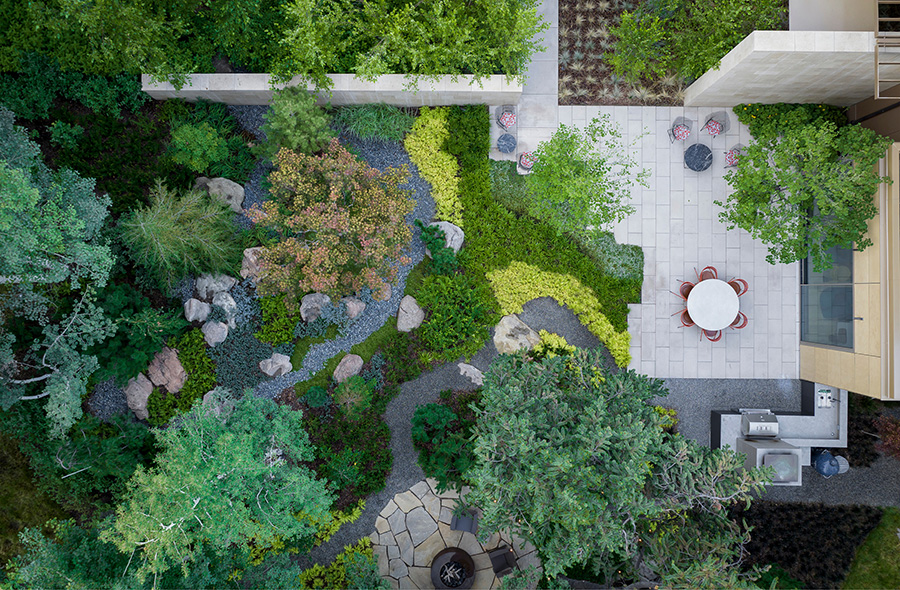
As cities grapple with the consequences of climate change, lush pockets of nature—including large-lot, urban parcels in historic neighborhoods that have been absorbed into a rapidly growing metropolitan area—can serve as effective and transferable case studies in reconnecting diverse ecologies and contributing community value to make urban spaces more habitable. Catalyzed by a family’s appreciation of horticulture, and their desire to create a distinct place that celebrates its regional setting, the designer forged a transformative vision across three acres, merging nature and nurture. Addressing years of deficient landscape management, the naturalistic sequence of restoration, refuge, and resiliency infuses biodiversity back into the city.
The Resilient Campus Historic Ecology and Water Conservation at UCLA
(Conceptual – Analysis & Planning)
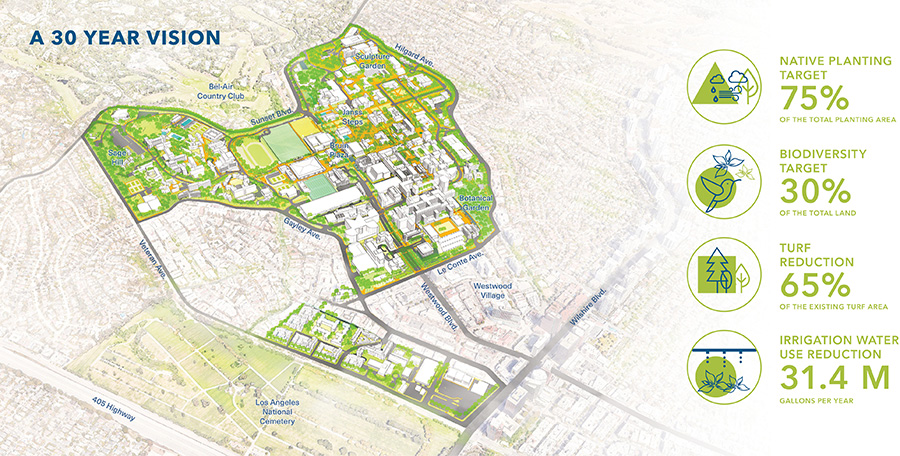
California, like all the West, faces mounting pressures to reduce water use. Campuses are hubs for innovation that can lead revolutionary climate initiatives and catalyze cultural shifts through the manifestation of their built environments. The UCLA Landscape Plan delivers a 30-year vision with measurable outcomes, targeting 31.4 million gallons of irrigation water saving annually and an overall 65% reduction in turf areas. Informed by historic ecology and traditional ecological knowledge, the Plan envisions an integrated landscape framework, encompassing three transformative ideas: landscape zones, environmental systems, and design and programming. It charts the course for UCLA to become a model for the next generation of campuses.
Merit Awards
Seven Greenways: A Cooperative Vision for Water in the Arid West
(Conceptual – Analysis & Planning)
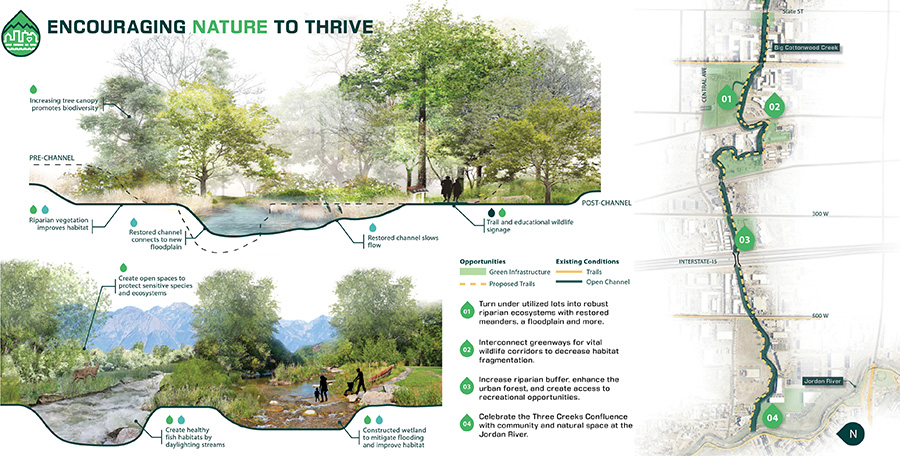
The Great Salt Lake is on the brink of disappearance. The drying lakebed will cause ecological collapse and expose millions of people to toxic dust. Urgency for solutions grows amidst megadrought. This is the first regional plan of action: revive 129 miles of upstream waterways flowing through the mountains to the most populous and rapidly urbanizing area of Utah. Ten jurisdictions united through goals for revitalizing creeks and connecting communities to greenways. The plan creation process is a model for collectively forging water landscape remedies involving thousands of community members, technical experts, and elected officials. The Seven Greenways Vision presents hope for climate justice and nature thriving in an urban oasis.
High Alpine Modernism – Outcrop Haus
(Built – Private Residential Landscape Design)
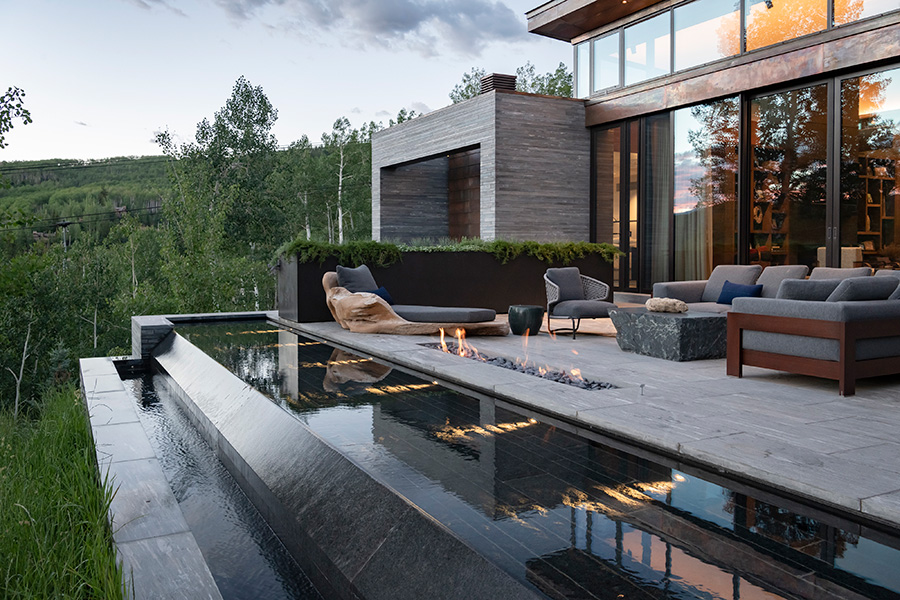
Nestled within the grandeur of the Elk Mountains of Colorado, Outcrop House, an endearing family retreat blends nature and modernity. Influenced by a deep appreciation for the property’s existing alpine ecosystems, the landscape architect composed a sequence of gardens, courtyards, and terraces that explore the material richness of the natural environment using natural stone, water, and native planting. The 2.3-acre site sits within forested terrain along the fringes of the Maroon Bells-Snowmass Wilderness Area. Inspired by the lands that make up the site’s panoramas, a multi-generational family of avid recreationists sought to create a home that commemorates the striking qualities of its natural context, a place to gather and reconnect with nature. Embracing the mountain setting and carefully considering the site’s natural features, the design creates synergistic relationships between architectural modernity and the natural landscape.
Honor Award
Reclaiming the South Platte – A Blueprint for Restoration + Resilience
(Conceptual – Analysis & Planning)
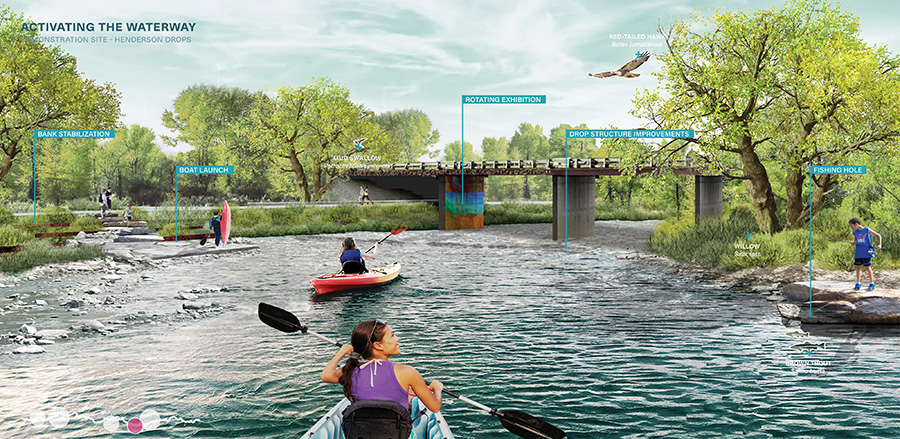
Downstream of Denver’s unchecked urbanization, Adams County citizens are exposed to the highest levels of particle pollution in Colorado. Here, 2,470 acres of the South Platte River floodplain have been mined, releasing hazardous dust into the air, and leaving behind a barren landscape now home to homelessness, vandalism and blight, invasive species, hazardous waste, and bank erosion. Uniting 67 agencies across four jurisdictions, the landscape architect catalyzed a 20-year vision plan that gives precedence to green solutions over gray. Through implementable strategies that harmonize people, land, and water, we reshaped perceptions of once forsaken river channels to vibrant healthy arteries that equitably enhance the quality of life for all.